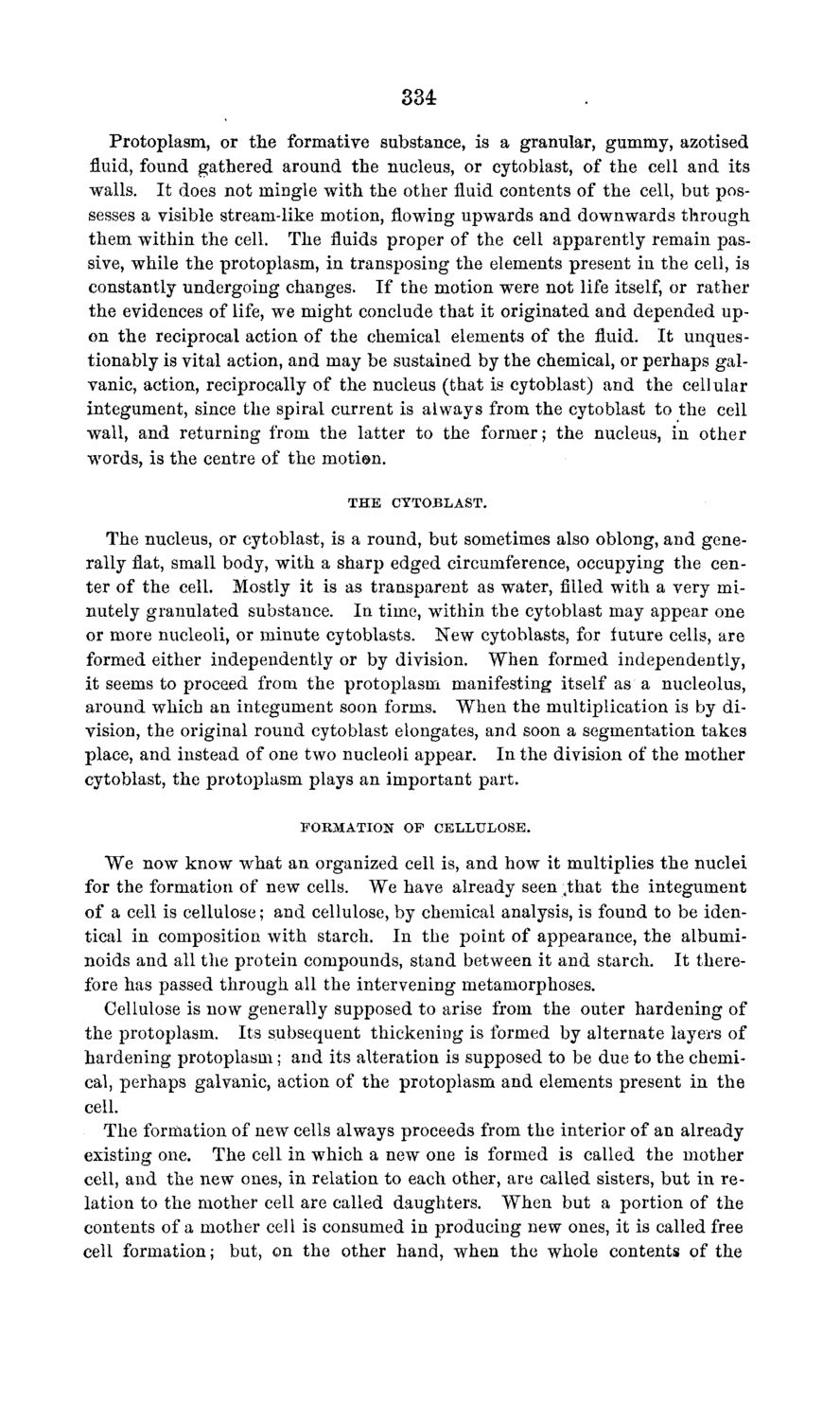| |
| |
Caption: Board of Trustees Minutes - 1869
This is a reduced-resolution page image for fast online browsing.

EXTRACTED TEXT FROM PAGE:
334 Protoplasm, or the formative substance, is a granular, gummy, azotised fluid, found gathered around the nucleus, or cytoblast, of the cell and its walls. It does not mingle with the other fluid contents of the cell, but possesses a visible stream-like motion, flowing upwards and downwards through them within the cell. The fluids proper of the cell apparently remain passive, while the protoplasm, in transposing the elements present in the cell, is constantly undergoing changes. If the motion were not life itself, or rather the evidences of life, we might conclude that it originated and depended upon the reciprocal action of the chemical elements of the fluid. It unquestionably is vital action, and may be sustained by the chemical, or perhaps galvanic, action, reciprocally of the nucleus (that is cytoblast) and the cellular integument, since the spiral current is always from the cytoblast to the cell wall, and returning from the latter to the former; the nucleus, in other words, is the centre of the motion. THE CYTOBLAST. The nucleus, or cytoblast, is a round, but sometimes also oblong, and generally flat, small body, with a sharp edged circumference, occupying the center of the cell. Mostly it is as transparent as water, filled with a very minutely granulated substance. In time, within the cytoblast may appear one or more nucleoli, or minute cytoblasts. New cytoblasts, for future cells, are formed either independently or by division. When formed independently, it seems to proceed from the protoplasm manifesting itself as a nucleolus, around which an integument soon forms. When the multiplication is by division, the original round cytoblast elongates, and soon a segmentation takes place, and instead of one two nucleoli appear. In the division of the mother cytoblast, the protoplasm plays an important part. FORMATION OF CELLULOSE. We now know what an organized cell is, and how it multiplies the nuclei for the formation of new cells. We have already seen /that the integument of a cell is cellulose; and cellulose, by chemical analysis, is found to be identical in composition with starch. In the point of appearance, the albuminoids and all the protein compounds, stand between it and starch. It therefore has passed through all the intervening metamorphoses. Cellulose is now generally supposed to arise from the outer hardening of the protoplasm. Its subsequent thickening is formed by alternate layers of hardening protoplasm; and its alteration is supposed to be due to the chemical, perhaps galvanic, action of the protoplasm and elements present in the cell. The formation of new cells always proceeds from the interior of an already existing one. The cell in which a new one is formed is called the mother cell, and the new ones, in relation to each other, are called sisters, but in relation to the mother cell are called daughters. When but a portion of the contents of a mother cell is consumed in producing new ones, it is called free cell formation; but, on the other hand, when the whole contents of the
| |